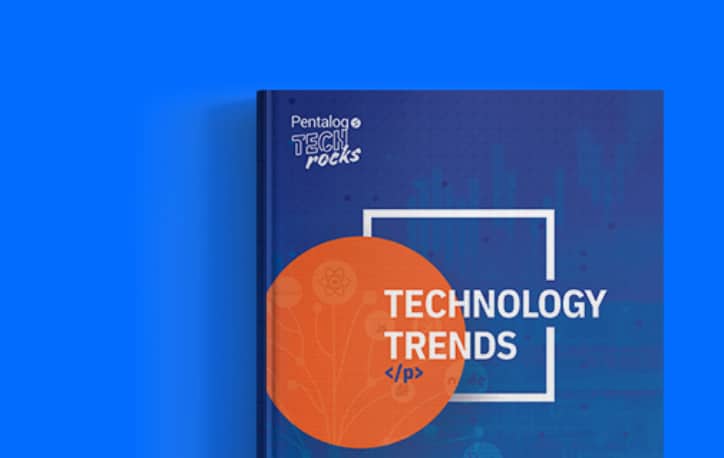Last Updated on March 3, 2025
67% of data and analytics professionals do not fully trust the data their organizations rely on for decision-making. These include data managers, stewards, architects, analysts, IT managers, C-level executives, VPs, line-of-business managers and directors, IT directors, and others from a range of industries.
As data usage surges across various business functions, issues of trust and reliability also increase – making it harder for business leaders to extract real value from their data and establish a data-driven culture. This is where data integrity becomes critical.
Without strong data integrity, organizations risk making flawed decisions, facing regulatory penalties, and damaging customer trust.
But what exactly is data integrity and how can businesses maintain it? Let’s find out!
What is Data Integrity?
Data integrity refers to the reliability and trustworthiness of data over its entire lifecycle – as it is captured, stored, converted, transferred, or integrated.
It can be understood in two ways:
- As a state: where data is accurate, complete, and consistent – reliable.
- As a process: where measures are taken to make data reliable and ensure it remains the same over time.
Data integrity ensures that data remains reliable not only in its final destination, but also as it moves between systems, transitions from one state to another, or used in various processes, such as data integration, data cleansing, data standardization, and so on.
4 Key Signs of Data Integrity
Since trustworthiness and reliability can feel subjective, it is important to identify what makes data truly trustworthy. Here are four fundamental characteristics that reflect the integrity of data:
- Reliability: The extent to which data is accurate, complete, timely, valid, consistent, and unique.
- Traceability: The extent to which the originating source(s) of data and the modifications made over time can be verified.
- Accessibility: The extent to which data is available and accessible to the right people, at the right time, and in the right format.
- Recoverability: The extent to which data is backed up and can be restored with minimal time and effort.
Types of Data Integrity
Data integrity relates to multiple aspects of data that must be controlled and governed to establish trust and reliability across any organization. These aspects can be categorized into two main types:
1. Physical Integrity
Physical data integrity refers to protecting data from physical threats, such as natural disasters, power outages, cyberattacks, and hardware failures. Organizations must ensure the physical integrity of their data both at rest (stored data) and in transit (when data moves between sources or systems).
Today, many businesses use cloud computing and storage services from trusted providers to physically keep their data safe, accessible, and recoverable – especially during downtimes.
2. Logical Integrity
Logical data integrity means keeping data logically sensible – in terms of its structure, design, and relationships. You can ensure logical integrity of your data by enforcing constraints on how data entities are stored, related to other entities, and referenced. It is further divided into four types:
a. Entity Integrity
Entity integrity means that every record in the database is unique and corresponds to a real-world entity (such as a customer, product, location, etc.). Ensuring entity integrity can help avoid duplicate records since every record in the database is identified with a unique, not-null attribute (also called primary key).
For example, you can use Social Security Numbers as unique identifiers in your customer database. Since two different customers cannot have the same SSN, this can help prevent (and identify) duplicate customer records.
b. Referential Integrity
Referential integrity means that an entity record only refers to another entity that exists in the system. In other words, it ensures that relationships between data entities remain valid. You can achieve referential integrity by utilizing primary keys (unique identifiers) as foreign keys across tables.
For example, consider two tables in a relational database Customer and Order. Referential integrity ensures that all records in the Order table link to a correct, valid customer present in the Customer table. If a customer is deleted, all associated orders should be handled accordingly to maintain consistency.
c. Domain Integrity
Domain integrity means that the data values of every column in the database are valid and are true to their specific domain or context.
To ensure domain integrity, you must enforce constraints on columns values in terms of data type, format, pattern, and measurement unit. For example, a Birthdate field should only contain valid calendar dates in a specified format – e.g., YYYY-MM-DD).
d. User-Defined Integrity
User-defined integrity refers to a set of constraints that are enforced on data due to the specialized needs of an organization. These integrity constraints are implemented if the first three types of constraints do not completely fulfill a business’ requirements.
For example, a company tracking leads may enforce Lead Source values based on the strategies used to generate leads, such as cold calling, organic traffic, or referral.
Why is Data Integrity Important?
Data is one of the most valuable (if not the most valuable) assets a business owns. Knowing this, it’s not hard to imagine how poor data integrity can impact a business – in terms of operations, decision-making, and overall performance. Organizations that can ensure data quality, availability, and safety gain a competitive advantage and enjoy a number of benefits.
Here are the top three areas where strong data integrity makes a significant difference:
1. Protecting Personally Identifiable Information (PII)
Businesses collect and store sensitive information about their customers, vendors, partners, and other associates. If this data is compromised – whether through corruption, unauthorized changes, or security failures – it cannot only damage trust, but also lead to severe reputational and legal consequences.
Many organizations, especially those operating in the healthcare or government industries, use data masking to protect PII. However, the issue with it is that if the obfuscated data is tampered with or loses its integrity in any other way, it can become impossible to retrieve the original information. For this reason, it is absolutely necessary for businesses to host their data in systems that protect its integrity throughout the lifecycle.
2. Ensuring Regulatory Compliance
Data protection regulations like GDPR, HIPAA, and CCPA require businesses to protect personal data of their customers and grant data owners (i.e., the customers themselves) the right to access, modify, or erase their information.
Additionally, these regulations impose strict data management principles, including:
- Transparency
- Purpose limitation
- Data minimization
- Accuracy
- Storage limitation
- Security
- Accountability
It is very difficult to comply with these standards if the underlying data is not well-managed. And a lack of compliance can limit your business operations and expose you to fines, legal actions, and restrictions, especially when operating in regulated industries or other geographical regions (regional or international markets). This often compels businesses to revisit and revise their data management strategies.
3. Gaining Reliable Insights
Data integrity goes hand in hand with accurate analytics and business intelligence (BI). If the data fed into BI tools or given to a team of analysts is unreliable, it is definitely going to provide flawed insights and inaccurate results.
Many organizations struggle to consistently generate reliable data insights because their data needs to go through complex ETL (Extract, Transform, Load) processes to become usable. With integrity checks, you can keep your data in the ready-to-use state most of the time, even during different transitions.
How to Ensure Data Integrity?
We’ve discussed the key characteristics of data integrity – reliability, traceability, accessibility, and recoverability. But how can businesses achieve and sustain these characteristics throughout the data lifecycle?
The answer lies in structured data management practices across different domains. Here are three critical methods or key approaches to ensure strong data integrity:
1. Data Quality Management
Data quality management refers to a systematic framework for continuously monitoring, cleaning, and enhancing data to eliminate errors and ensure it remains accurate, valid, complete, and reliable.
A number of data quality processes are implemented to eliminate data quality issues. Key ones include:
- Data Profiling: Analyzing datasets in terms of completeness, patterns, data types, formats, anomalies and more and generating a comprehensive report about the state of data.
- Cleaning & Standardization: Eliminating null or garbage values, removing noise, correcting misspellings, replacing abbreviations, standardizing formats, and transforming data types and patterns.
- Data Matching: Identifying and linking records belonging to the same entity.
- Deduplication: Identifying duplicate data records, overwriting values, and merging information to attain the golden record.
- Validation & Enrichment: Verifying data accuracy and supplementing it with external reference sources when needed.
Since the requirements and characteristics of data quality are different for every organization, the data quality management approach one needs also vary. The types of people you need to manage data quality, the metrics you need to measure it, and the data quality processes you need to implement – everything depends on multiple factors, such as company size, dataset size and complexity, and data sources. Implementing automation-driven data quality tools – like DataMatch Enterprise (DME) – can significantly streamline these processes and improve data integrity at scale.
2. Data Security and Privacy Measures
While data security and privacy are distinct concepts – data security refers to the process of safeguarding data from theft, malicious attacks, and unethical breaches, whereas data privacy refers to protecting sensitive information and limiting its access to authorized users only – they share a common goal, which is to protect data from breaches, unauthorized access, and corruption.
To secure and protect data, organizations must implement a number of processes. These include:
- Data Classification: Detecting and classifying private (sensitive) and public (non-sensitive) data so that suitable measures can be taken to protect sensitive data (during rest and transit).
- Identity & Access Management (IAM): Creating digital identities and restricting data access and manipulation only to authorized personnel through authentication and role-based permissions.
- Data Masking: Protecting personally identifiable information (PII) through encryption, character shuffling, tokenization, or other data hiding methods.
- Regulatory Compliance: Adhering to data laws to give consumers more control of their data, protect their information, and prevent legal troubles.
- Data Backup and Disaster Recovery: Implementing automated backups across multiple locations to ensure immediate data recovery during system failures.
3. Data Governance Practices
The term data governance refers to a collection of roles, policies, workflows, standards, metrics, and controls that ensure efficient data usage and security, and enables a company to reach its data objectives. Simply put, it defines who owns the data, how it should be managed, and who has access to it.
Key components of data governance include:
- Designing data pipelines to govern and control data flow throughout organization (across systems and departments).
- Creating moderation workflows to verify data updates before they go live.
- Limiting data usage and sharing between authorized users only (based on roles and policies).
- Establishing collaboration guidelines for internal and external stakeholders.
- Enabling data provenance tracking by capturing metadata, its origin, as well as update history to ensure traceability and accountability.
By following these data integrity best practices, businesses can ensure that their data remains trustworthy, accurate, and analysis-ready, which leads to better decision-making and strategic growth.
What Are the Threats to Data Integrity?
Today, if a business cannot trust the accuracy and authenticity of its data, it is bound to be left behind in the market where every competitor has established and utilizes a data-driven system. Data has become extremely important for business success. However, a number of factors can pose as serious threats to its integrity.
Here are the most common data integrity challenges or threats businesses face:
1. Data Quality Issues
Data quality is the foundation of data integrity. People often get confused between data integrity and data quality and use both terms interchangeably. In reality, data quality is a part of (a very critical one) data integrity– the part where you expect data to be reliable and accurate. For this reason, data quality issues can introduce data integrity issues.
Common data quality issues that threaten integrity include:
❌ Incomplete data – Missing values that prevent accurate analysis.
❌ Duplicate records – Redundant data that skews insights.
❌ Inaccurate entries – Incorrect values caused by manual errors.
❌ Inconsistent formatting – Different data structures leading to confusion.
The most important thing that enhances reliance on data is its completeness, validity, uniqueness, and other data quality dimensions that indicate quality of data. However, the presence of intolerable defects in your datasets can deem your data unusable for any intended purpose. If your teams cannot trust the data they have, it affects their work productivity and efficiency.
How to Mitigate This Threat?
To prevent data quality issues, you need to treat incoming data to data pipelines where a number of operations are performed, such as data cleansing, standardization, and matching, to ensure it is accurate and structured before entering your systems.
DataMatch Enterprise can automate these data quality processes and thus, helps simplify the data quality management task for you.
2. Integration Errors
Modern businesses rely on multiple data sources – CRM systems, ERP software, cloud applications, and third-party databases. They implement various data integration techniques to bring this data together and enable deeper, more accurate insights. However, they do not always go as planned or expected. To combine and consolidate dispersed data into a single view, it undergoes a number of conversions and transfers that can potentially compromise data integrity and cause issues like:
❌ Loss of confidential data during transfers.
❌ Data quality deterioration after integration.
❌ Inconsistent outputs despite using the same integration method.
❌ Misinterpretation of data due to changes in data meaning pre- and post-integration.
How to Mitigate This Threat?
Use robust ETL (Extract, Transform, Load) processes to validate, clean, and standardize data before merging it from multiple sources.
3. Data Firewall Compromises
Data firewalls protect your data from cyberattacks and malicious data breaches. Data integrity issues are likely to occur when these firewalls fail or collapse due to misconfigurations, forced attacks, or other technical issues.
A firewall failure or compromise can make your sensitive data vulnerable and result in:
❌ Unauthorized data access by malicious actors.
❌ Data manipulation that compromises accuracy.
❌ Confidential business or customer data leaks, which can lead to compliance violations and reputational damage.
How to Mitigate This Threat?
Implement multiple firewalls or multi-layered security with encryption, intrusion detection, and real-time monitoring. Also, make sure to regularly audit and update your firewall configurations to prevent vulnerabilities.
4. Hardware or Server Failure
Many organizations have their own IT infrastructure for capturing, hosting, and servicing business data and information. Due to stringiest data security requirements, they withstand the cost of setting up hardware servers and configuring software as needed. However, such setups often encounter system faults and errors and shut down. In absence of proper data retention and recovery measures, this can lead to:
❌ Permanent data loss if no backups exist.
❌ Extended downtimes, during which teams cannot access critical data.
❌ Corrupted files that make recovery difficult.
How to Mitigate This Threat?
Adopt cloud-based backup solutions for redundant storage and disaster recovery. Moreover, you can implement automated failover systems to minimize downtime.
5. Human Error or Lack of Training
Even with advanced technology and rigorous efforts, human mistakes can damage your data’s reliability; they remain one of the biggest threats to data integrity. Misconfigurations, system design failures, incorrect or incomplete data entries, and improper data handling can all lead to loss of data accuracy and reliability.
Some common examples of human error include:
❌ Mistakes in manual data entry leading to incorrect records.
❌ Failure to follow security protocols, which exposes sensitive information.
❌ Inconsistent data handling due to lack of standard procedures.
How to Mitigate This Threat?
You need to educate teams about your organizational data, such as what it contains and how to handle it. Ensuring data literacy across your business can help attain and sustain data integrity in the long term. Make sure to:
- Conduct regular trainings on data governance and best practices.
- Enforce role-based access controls to prevent unauthorized edits.
- Promote data literacy programs to help employees understand the value of data integrity.
Enhance Data Trust and Reliability with Data Quality
If your business is struggling to achieve physical and logical data integrity across different business functions, it is okay to start at one place and potentially grow with time. Ensuring data quality in terms of accuracy, validity, completeness, and uniqueness is one way to begin implementing data integrity techniques.
Having delivered data cleansing and matching solutions to Fortune 500 companies in the last decade, we understand the importance of being able to trust and rely on your data. Our product, DataMatch Enterprise, will help you:
- Clean and standardize datasets to improve accuracy.
- Eliminate duplicate records of the same entity and consolidate information into a single source of truth.
- Enhance data reliability and usability for confident decision-making.
You can download the free trial today or schedule a personalized session with our experts to understand how DME can help you trust your data and get the most out of it at an enterprise level.
Frequently Asked Questions (FAQs)
Understanding & Detecting Data Integrity Issues
1. How can I check if my data has integrity issues?
To assess data integrity, start by running a data profiling analysis. This will help identify inconsistencies, missing values, duplicate records, and formatting errors. DataMatch Enterprise includes advanced data profiling tools that generate reports on your data’s completeness, accuracy, and structure, which makes it easier to detect and fix integrity issues.
2. How does poor data integrity impact analytics and business intelligence?
If your datasets contain errors, inconsistencies, or outdated information, your analytics and BI measures or tools will produce unreliable insights. DataMatch Enterprise ensures that your data is clean, accurate, and up to date, so your business intelligence tools generate insights you can trust.
3. What’s the best way to track changes in my business data without losing integrity?
Track data lineage and maintain an audit trails for all data modifications. Data governance solutions and workflow automation can ensure changes are documented and approved. This helps maintain a clear history of data modifications for compliance and accuracy.
Preventing & Fixing Data Integrity Issues
4. How can I prevent duplicate records from corrupting my data integrity?
Duplicate records create inconsistencies and errors in reporting. DataMatch Enterprise uses advanced data matching and deduplication features – like fuzzy matching, phonetic algorithms, and rule-based deduplication – to help businesses merge redundant records, preserve unique data points, and maintain a single source of truth across all datasets.
5. How can I prevent data integrity issues when importing data from multiple sources?
Use data profiling tools to assess data quality before importing. Apply validation rules to catch inconsistencies, and use deduplication tools like DataMatch Enterprise to identify and merge duplicate records during integration.
6. Can DataMatch Enterprise detect and fix inconsistent data formats across multiple sources?
Yes, DataMatch Enterprise includes data standardization features that clean, standardize, and align data formats before merging datasets. It ensures consistency by applying predefined rules across different sources.
7. What steps should I take to recover data integrity after a data breach or corruption?
If your data integrity has been compromised, follow these steps:
- Identify the source of the breach or data corruption.
- Restore data from backups if available.
- Use data cleansing and validation tools (like DataMatch Enterprise) to detect and remove errors.
- Implement stricter data governance policies to prevent future issues.
Automating & Scaling Data Integrity Management
8. How can I automate data integrity checks in my organization?
Yes! DataMatch Enterprise allows businesses to schedule automated data quality checks, including profiling, cleansing, deduplication, and validation to ensure their data stays accurate with minimal manual intervention. Additionally, it can integrate with data pipelines to perform ongoing profiling, matching, and cleansing to ensure that data remains clean and usable for analytics, reporting, and operational systems.
9. What’s the easiest way to ensure my data stays accurate over time?
Automate data cleansing and monitoring. Schedule regular data quality assessments and use a data matching tool like DataMatch Enterprise to detect errors and inconsistencies before they cause issues.
Compliance & Security
10. Can DataMatch Enterprise help with regulatory compliance (GDPR, HIPAA, CCPA)?
Yes! DataMatch Enterprise helps businesses meet compliance standards by:
- Identifying and classifying sensitive data to ensure proper handling.
- Masking personally identifiable information (PII) to protect customer privacy.
- Maintaining audit trails to track data modifications and access history.
Product-Specific Questions
11. What makes DataMatch Enterprise different from other data integrity solutions?
Unlike generic ETL tools, DataMatch Enterprise offers precise and more comprehensive data cleansing, matching, and deduplication using advanced algorithms. It ensures high data accuracy and reliability with minimal manual effort.
12. How does DataMatch Enterprise compare to AI-powered data integrity tools?
While DataMatch Enterprise does not use AI for data matching, it uses advanced phonetic, fuzzy, and domain-specific algorithms to achieve high-accuracy matching and deduplication. Its deterministic and probabilistic matching methods often outperform generic AI-based tools in terms of precision and control.
13. Does DataMatch Enterprise work with cloud-based and on-premise data environments?
Yes! Whether your data is stored on-premises or in the cloud, DataMatch Enterprise integrates with major databases, CRMs, and cloud storage platforms, helping you maintain data integrity across multiple environments.
14. How much manual effort is required to maintain data integrity with DataMatch Enterprise?
Minimal! DataMatch Enterprise automates data cleansing, matching, and deduplication. It also allows users to configure rules and workflows that process data automatically with minimal intervention.
15. Can I try DataMatch Enterprise before committing to a purchase?
Yes! DataMatch Enterprise offers a free trial to let users test its data cleansing and matching capabilities. You can also schedule a demo with our experts to see how it fits your specific business needs.



































